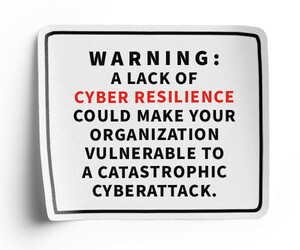Recent cyberattacks have demonstrated the widespread impact of ransomware beyond individual healthcare providers. Attacks on blood suppliers, for instance, have disrupted critical supply chains, directly affecting hospitals and patients. One such attack last year created significant operational disruptions that forced more than 350 hospitals in the southeastern U.S. to implement emergency protocols. And earlier this year, a major New York City blood bank was forced to cancel 17 blood drives after a cyberattack hit its systems.
These incidents emphasize that healthcare cybersecurity is about more than just protecting patient records, it's about safeguarding the entire supply chain that supports lifesaving medical care.
The Problem With Business Email Compromises
Healthcare institutions are also increasingly vulnerable to business email compromise and wire fraud, a form of cybercrime in which attackers infiltrate or impersonate official email accounts to redirect payments, steal sensitive data or commit financial fraud.
BEC attacks are particularly dangerous in healthcare because of the high volume of financial transactions involving vendors, insurance companies and patients. Wire fraud often occurs through phishing emails or by exploiting weak security in email systems. To prevent BEC, healthcare organizations should implement strong email authentication measures, require multifactor authentication and regularly train staff to recognize phishing attempts.
EXPLORE: How does IAM address the challenges of increasingly complex IT environments?
Recommendations for Enhancing Cybersecurity in Healthcare
Given highlighted vulnerabilities and the increasing complexity of the cybersecurity landscape in healthcare, organizations must adopt a multifaceted approach to protecting patient data and maintaining regulatory compliance. Consider the following key steps:
- Conduct comprehensive risk assessments. Regularly assess the risks associated with the use of digital technologies, including cloud-based EHRs and AI systems. Identify potential vulnerabilities and implement measures to mitigate them.
- Invest in advanced security technologies. Implement state-of-the-art encryption, access control and intrusion detection systems to protect sensitive data. Ensure that cloud service providers adhere to the highest security standards and that responsibilities are clearly defined in service agreements.
- Enhance employee training. Ensure that all employees, from frontline staff to executives, are trained in cybersecurity best practices. This includes recognizing phishing attempts, securing mobile devices and understanding the importance of data protection.
- Strengthen compliance efforts. Stay informed about changes to HIPAA, the Health Information Technology for Economic and Clinical Health Act and other relevant regulations. Regularly review and update policies and procedures to ensure ongoing compliance, particularly when adopting new technologies.
- Engage in continuous monitoring. Implement continuous monitoring of systems and networks to detect and respond to threats in real time. This includes regularly updating software and patching vulnerabilities as they are identified.
- Develop an incident response plan. Having a comprehensive and functional incident response plan will enable the organization to swiftly identify, isolate and eradicate security breaches. The plan will govern how security incidents are handled and will also document key stakeholders and escalation procedures.
- Perform tabletop training exercises. Immersing end users and other stakeholders in simulations of the types of incidents and events they may face on the job will help familiarize everyone with organization policies, procedures and response plans.
- Retain an expert trusted adviser. An independent expert consultant can validate your security program and provide subject matter expertise when required. This allows your organization to verify the effectiveness of its security initiatives while also filling in gaps created by budget constraints or internal limitations.
Click the banner below to read the 2024 CDW Cybersecurity Research Report.













